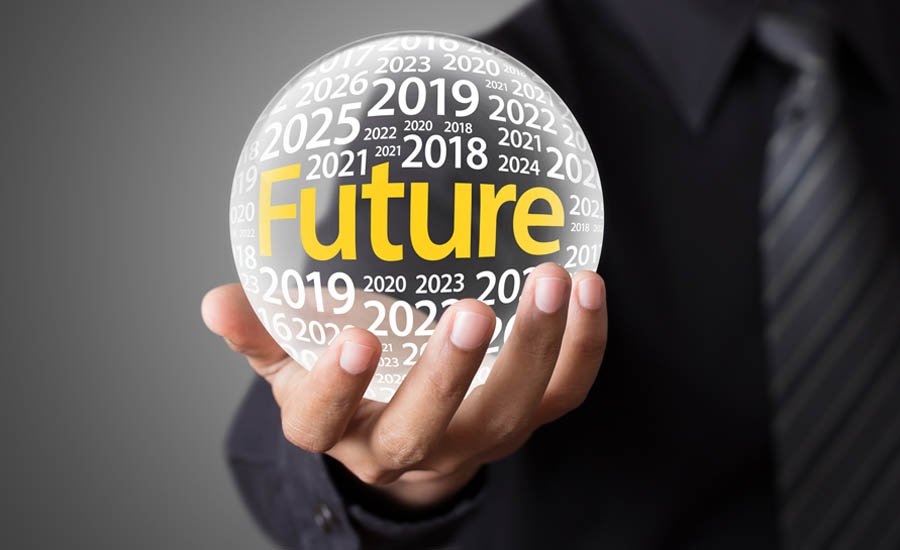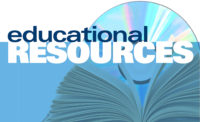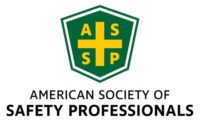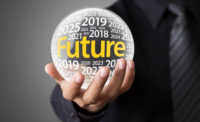Posted with permission from: Examinetics
As we enter a new decade, occupational safety and health professionals have a lot to consider. From demographic changes and new regulations to innovative technology and medical advancements, there is a lot to explore.
Examinetics worked with 20 of our client partners and other industry thought leaders to present their thoughts on the trends, challenges and opportunities shaping occupational health. We wanted to know what these industry leaders think are the issues and innovative solutions that will make an impact on our profession in 2020 and beyond.
Anyone involved in occupational health and compliance not only has an important role in keeping our workforce safe but also in their company’s goals of staying competitive. Read on to find out what some experts predict for the upcoming year and new decade so you can stay on top of your game.
Note: These are the views and opinions of the individual contributors and do not reflect the view(s) of the companies and organizations where they work.
Demographic changes will make a big impact on the U.S. workforce
Julie Lecci, MSN, RN, COHN, COHC, CWCP
Manager, Occupational Health | Conagra
The trend that I see most affecting the safety industry is the aging workforce. This presents challenges for us daily.As a person ages, their physical abilities continue to decline, while work requirements remain constant. Due to various employment and disability laws, we are pushed to learn to be creative with our jobs and processes so that we can meet the limitations of our employees. We are actively pursuing a more rigorous enterprise-wide ergonomics initiative that will help us increase our ability to identify risks and educate our front-line employees on the identification of ergonomic risks earlier. This will provide them the skills to mitigate risk and create a partnership to work toward a resolution.
John May, CSP, CHMM
EHS&S Manager | Cooper Lighting Solutions
A major trend in safety is the generational span in the workforce today.This is particularly noticeable due to many employees continuing to work beyond typical retirement age, as well as an influx of workers just getting into the workforce.There are major challenges in areas such as training where legacy employees learn differently than those just entering the workforce.Safety professionals must become more nimble in their ability to react to the change in needs of the different generations of employees and find creative ways to get all generations engaged.
Desiree Giroux
HSEQ Manager | Imerys
Very few Generation Z employees have had the same type of hands-on experience in an industrial and mechanical environment that their predecessors had. This makes some traditional safety concepts, such as lockout-tagout and safe operation of machinery, initially hard to grasp. However, their skill and interest in automation and technological processes is a strong point we need to embrace and hone. This difference, though challenging at first, will enable us to take a fresh look at the way we work and how we can creatively use technology to reduce risk, encourage safe behaviors, and improve our efficiency within our lean work environments.
Kathleen Ciszewski, EIT
Environmental Health and Safety Manager | Danone North America
The manufacturing industry and safety are changing on a day-to-day basis. We're seeing an aging workforce as Baby Boomers are leaping into their last decade fo work. Many of the physical demands that were easy as a younger workforce are becoming increasingly difficult through aging. Computers and automation are taking over, yet there is still a physical component that we have not been able to tackle without significant financial cost. Companies are using automation to cut headcount and costs, but innovation is still missing to improve automation regarding safety. We need a reduction of repetitive motion and heavy lifting to keep our aging workforce at their best. Adaptable, inexpensive, easy-to-use tools and systems will be needed to continue to optimize our workforce and prevent future injuries, or I'm afraid we will see a serious uptick in stress/strain and repetitive motion injuries.
New industries and new challenges will keep EHS pros on their toes
Billy Bullock, DHSc, MSPH, CIH, CSP, FAIHA
Director, Industrial Hygiene | CSX Transportation
Currently, there are more Industrial Hygiene (IH) and Occupational Health professionals retiring than coming into the profession to backfill vacancies. At the same time, the need for IH expertise s increasing due to emerging industries and new technology. For example, 3D printing is already transforming what, where, how and by whom products are produced. In addition, the cannabis industry is booming and Health and Safety professionals now have entirely new workplace risks to assess and exposures to control. From cultivation and harvesting to the extraction of oils and the manufacturing of consumer products, workers are facing potential risks that are not well known or characterized.
While IH's face new workplace risks, the growth of new industries is also leading to the development of advanced technologies. From an exposure assessment standpoint, this includes advancements in sensor technology. This could, in part, augment the lack of trained IH professionals. However, great caution needs to be exercised here. A strong and robust economy will always need healthy workers and healthy workplaces. Everyone should be involved in helping prepare the next generation of IH's to meet these growing needs.
Alya Khan, MD, MS
Occupational Medicine Residency Program Director | University of California, Irvine
Climate change is a hot topic, no pun intended. Employers are faced with many external challenges such as economics and the labor market, which largely impacts their employees. Yet, climate change seeps into factors that influence workers and their employers. Its impact directly affects workers from rising ambient temperatures, loss of land from wildfires and other natural disasters, as well as the downstream effects from climate migration. Where will industries go? How will they change their practices to fare under climate change? How will this ultimately affect occupational health? The occupational health professional needs to be cognizant of the shifting work hazards and the health risks that climate change is posing to workers.
Constantine Gean, MD, MS, MBA, FACOEM
Occupational Medicine Consultant | Occupational Health Strategies, Inc.
Two trends will merge. The first is nonstandard work arrangements ("gig economy" workers(1)with no benefits or labor-laws protection plus high injury/illness rates) are prompting corrective legislation (e.g., CA AB-5). The second is the scientific linkage of work to health issues such as abnormal weight, sleep disorders, cardiovascular disease, depression and more that has led to government interest (e.g., NIOSH's Total Worker Health(2)).
These trends will promote workplace safety and health programs, via government, legislation and corporate liability. The implication will be a growing demand for worker population assessments falling somewhere between mandated surveillance and traditional wellness exams. New mobile technology and self-tracking tools, a phenomenon called the "quantified self"(3), will help fill this niche.
Don Cleveland
Director, Industrial Hygiene | BNSF Railway
We all get solid educational training in our respective disciplines, primarily technical or on-the-job training. However, having technical training does not mean you will be successful in making an impact on your organization. Sometimes companies merely incorporate safety into their mission statement or use it to satisfy their stakeholders; other times they really mean it. However, we in the health and safety industry won't make much of an impact if we're not able to sell it upstream. Talking numbers and data, PEL's, TLV's, etc. is somewhat useful, but it doesn't necessarily make the impact we want in many instances. I believe most EH&S professionals don't sell well. Back up and look at the big picture - envision yourself as the VP or CEO listening to your safety manager, along with all the other noise in your head of pleasing your shareholders, satisfying customers and meeting performance goals. Where does safety fit in with all that noise? Simple. Boil down your message and make it impactful for those who make decisions quickly and on the fly in some cases. Your communication strategy has to fit your organization. Are you in an old industry with regimented management or in a high tech industry with Google-like behavior? Either way, words matter, technique matters. I would advise the safety and health professional to take a few courses in leadership management or effective communication courses. After all, what good is all that data if you can't sell it to your leadership to make a real impact?
Beau VanDyke
Director, Global Safety and Health | Koppers Inc.
The old "what they do at home is their business" mentality is being challenged. Understanding that safety performance goes far beyond what happens when an employee is at work will be a critical connection that companies need to make and build a strategy to address. Employees' habits, behaviors and circumstances at home have a direct impact on their ability to perform their jobs safely. It is increasingly important to understand that assistance and wellness programs that improve an employee's overall well-being are key components to better safety performance at work.
Andrea Lankford
Corporate Director of Safety | Reliance Steel & Aluminum Co.
In 2020, we are focusing on moving from the science of compliance to the art safety. While compliance must always be the foundation of a program, it is essential to move beyond to create a culture of safety. Our focus as we make this shift is changing the approach from pulling data on Lagging indicators to Leading indicators. Lagging indicators focus specifically on negative events that have already happened while Leading indicators allow us to focus on positive actions that are being taken to prevent events from ever happening. To create an authentic culture of safety an organization must focus more on the positive.
Partick King, CSP
EH&S Manager | Armstrong World Industries
It's all about the people. As we enter 2020, we are seeing giant priority shifts in the EHS field. We are seeing safety compliance move to safety culture, and management-driven safety cultures to employee-driven safety cultures. We are continuously moving towards more proactive safety cultures that reward positive safety behaviors, instead of disciplining negative safety behaviors. Companies will need to be thinking of injury prevention and wellness plans for their people, just as much as preventive maintenance plans for their machines. Positive employee-driven safety cultures are the way we will see companies continue this trend.
Cherryl J. Christensen,DO, MS, FACOEM
Medical Director | Global Corporate Health Solutions, LLC
My greatest concern is for the psychological health of workers. We see the impending epidemic of depression spreading across the globe not discriminating by race, gender or geography. Depression is the number one cause of ill health and disability (WHO).
What causes the hopelessness and what can we do? World Economic Forum suggests, as do researchers at UPenn, Havard and others that meaningful lives and employment are at the core. The idea of meaningfulness in our lives seems to be prevalent across the findings.
What do we do in OEM? Consider moving from "health and wellness" to "health and wellbeing. "Creating cultures of health and wellbeing is the main challenge for those of us working with industry - to give us reasons to excel and produce at work and to look forward to going home to lives we enjoy with family and friends.
The future is one of creating meaningful lives, starting with connecting our work and our health. Taking a holistic view and helping to create happy, healthy meaningful lives is the challenge to OEM for 2020 and for years to come.
Diane Giglio, RN, BSN
Occupational Health Nurse | Medtronic
I see an expansion of the occupational health nurse (OHN) role to incorporate and promote wellness in the workforce, and to develop a vibrant and vigorous wellness program that focuses on the most identified health issues found in specific workplace populations. The OHN will still need to support the employee's capacity to work as the nurse always has done. However, an OHN will need to identify and evaluate symptoms of ill health as early as possible - even referring an employee to an MD specialist, emergency department, urgent care center or their PCP, if necessary.
The results would benefit both the employee and management. As an employee's knowledge of their health and its connection to work and life grows, their interest in workplace factors will enhance their ability to improve their health. Employees will become more apt to protect themselves from work-related health and safety hazards. An improvement (and good monitoring) of their health situation will enable the employee to continue to be a major contributor in the workforces and a benefit to the company. As results work motivation and job satisfaction can also be expected to improve.
I view this as a win-win for employees and management. The OHN, in turn, is not only rewarded with a healthier workplace environment but also seen as a champion for health and wellness.
Traci Hargadon
Safety Coordinator | Caldwell Tanks
Focusing solely on safety misses a key component of worker's wellbeing. There is a need for employees to connect on a deeper level. Praying together in the workplace offers a better person-to-person connection. This is critical in a generation where people feel isolated. Suicide and drug-related deaths are at an all-time high. This problem has many roots. Caring should not stop when it is time to clock out. We embrace "see something, say something, do something." Why? It is our obligation to be there for our work family in a meaningful way.
New tools and technology will help improve workplace safety
Kent Peterson, MD
Chief Medical Officer | Examinetics
Four advances shaping the future of occupational health and safety are evidence-based science, digital technology, data analytics and population health management. These trends are improving clinical prevention, environmental health and safety, ergonomics, health promotion, wellness and productivity.
In 2020 and beyond, employers will be able to rely on many new innovative tools at their disposal. These include evidence-based clinical practice guidelines, health risk appraisals and wellbeing surveys, new productivity metrics as "presenteeism," occupational health information systems, telehealth and web-based coaching, inventive health incentives and rewards, new surveillance methods of workgroups and health risk stratification.
Additionally, look for health programs to extend beyond employees to contractors, families, retirees and the wider promotion of healthy cultures and community health.
Frank J. Cruice, MS, CSP, CRSP, CHCM, CHS-I
Sr. Director - Safety & Security | Perdue Farms
The next decade will provide safety and health professionals with unprecedented opportunities to improve workplace safety through the deployment of wearable technology. Access to more granular and real-time risk data will usher in a new age of safety. The challenge for safety and health professionals will be harnessing this explosion of data to design, communicate and implement timely and effective risk-based solutions.
Lee Travis, CSP, MPS
Sr. Safety & Health Specialist | Vulcan Materials
Creating and delivering quality safety and health training to an ever-changing and tech-savvy workforce is a challenge to safety professionals across industries. Vulcan Materials Company recognizes this. In the area of new training technology, we are exploring the use of virtual reality training for our employees, and possibly visitors and vendors to our sites. The technology has many potential applications in the mining and construction industries - not just in safety but production as well. Anything from site-specific hazard training and hazard recognition training for new employees, to task training on new mobile equipment, the possibilities are endless.The challenges for any safety professional are to seek out new and creative ways to deliver training and to have the employees engaged in that process. The use of emerging technologies to deliver quality safety training is vital to the engagement piece with more and more newly hired employees coming into the industry with little to no industry experience. Having a more tech-savvy approach will aid in the engagement of those employees in the training process.
David Soto
EH&S Director | The Harris Group
With the use of oil-eating microbes paired with the right micronutrients, we now can clean up most hydrocarbon spills or contaminants with eco-friendly products, which are safer for our employees and the environments. The evolution from clay (that captures hydrocarbons but, over time, will degrade and allow them to escape) to an eco-friendly "mitigator" absorbent that is also light is a result of science. Due to the oil-eating microbes, the waste is refused in the landfill, as there are no longer hydrocarbons present. As the supplier of our oil-eating microbes says, "Science meets safety and it's a blessed relationship!"
Don't overlook ergonomics
Michael Steward
EHS Manager | Altec
Ergonomics in the workplace is something most safety professionals do not spend a lot of time working on. In fact, we should focus on this more than some of our other programs due to the cost of musculoskeletal disorder (MSD) injuries. Many of us don't know that the cost of MSD, on average, is $13.1 billion per year. Our focus should be on prevention, not reaction. Understanding workstations and how our people lift, carry, push and pull our products will show how to resolve overexertion from the work employees perform day-to-day. Along with these items, we must also look at our office workers. Preventing eyestrain, bad posture and incorrect workstations can rid you of those pesky injuries that no one wants on their 300 log. By looking at ergonomics, every year a company could lower their risk, cost and rates and improve their overall safety programs.
Paul W. Brandt-Rauf, ScD, MD, DrPH
Editor-In-Chief | Journal of Occupational and Environmental Medicine
In a knowledge economy dependent on the optimal use of technology, the nascent field of neuroergonomics will have an increasing impact on the workplace and worker productivity. Neuroergonomics aims to improve the human-computer interaction, the efficiency and safety of human-machine teamwork, the acceleration of training and skill acquisition, neurorehabilitation, and neurocognitive enhancement among other applications in real-time and in real-world work environments. This is possible through the development of functional near-infrared brain spectroscopy and magnetic/electric transcortical direct brain stimulation technology that is miniatured, battery-operated, portable, wearable, mobile and wireless.
With continuous regulatory updates, shifting demographics and new innovative tools, it's important to stay up-to-date with the latest in occupational health and safety. You can rely on Examinetics to guide you through the landscape of health and compliance services for all your workforce needs. From health screenings and medical exams to full program management services, we can help reduce the ever-increasing burden of staying compliant with industry regulation and legislation.
1. By 2020 the number of self-employed workers in the United States is projected to triple to 42 million people. (Decoding millennials in the gig economy: Six trends to watch in alternative work,Deloitte Insights, May 1, 2018.)
2. NIOSH Centers of Excellence for Total Worker Health https://www.cdc.gov/niosh/twh/centers.html
3. The quantified self refers both to the cultural phenomenon of self-tracking with technology and to a community of users and makers of self-tracking tools who share an interest in “self-knowledge through numbers.https://en.wikipedia.org/wiki/Quantified_self






